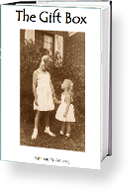Words and Pictures III: The Crutch
(This is the last installment on this topic, continued from Words and Pictures I: Childhood and Words and Pictures II: Growing Up.)
What I’ve learned from this double vision of the world is that the basic ingredient for visual art and fiction is OBSERVATION.
If you’ve ever drawn a picture of something that didn’t turn out right, most likely the fault wasn’t in your hand. It was in your eye. In order to draw something accurately, you have to see it accurately, and that’s not as easy as you might think. We make certain assumptions about things until we study them carefully, and those assumptions are often wrong. Items in the distance may be much smaller than we think they are, and that hand reaching out toward you is huge – maybe twice as large as the head of the man who’s reaching. Teaching drawing is always more about teaching seeing than about anything else. That’s why people say an artist has an “eye” for detail.
Observation is just as necessary for writers, who are encouraged to “write what they know.” Writers must catch the details, the nuances of setting and character, light and motion. The best artists study the world around them, then transform what they see, recreating it into what they saw transformed. But everyone starts with the real world.
(This invasive Japanese kudzu in South Carolina
was reborn as a motif in The Gift Box.)
Alas, for all my love of art and of writing, I am not very observant of details. I tend to see only one aspect of the world I’m in. If a lady in a startling red dress walks into the room, her dress eclipses everything. I miss her eye color and whether she is wearing shoes or not, I don’t catch her name and I may not hear her speak. The dress dislodges my thoughts and sends me off on a flight of fancy — to The Scarlet Letter or those ruby slippers on Dorothy in the Wizard of Oz. Later, if I try to remember the woman’s name, if she wore glasses or jewelry, I’m at a loss.
Ah, but for me there is The Crutch:
I write my story drawing on my experiences and emotions as I feel or perceive them at the time. I let my imagination go, and don’t worry too much about realistic detail. Later, in the process of research, I plug the holes. I research through words, of course, but I also spend a lot of time looking at photographs. On one research trip to South Carolina and Florida, I took hundreds of pictures, many of scenes and objects I could never have imagined. I often blow these up, use them in art projects or frame them. I use the camera lens to focus. Later, I use the pictures to remember or clarify what I’ve seen. I meditate on them, and study the minutiae I might have missed in passing. In time, some details will be bonded to the story they inform.
(I came across this startling scene on a Florida Seminole Reservation. It reappeared in Flight.)
I’m thankful for the way a camera can freeze the image that’s caught my eye and hold it forever. Or long enough for me to recreate and anchor it – in words.
You can follow any responses to this entry through the RSS 2.0 feed. You can leave a response, or trackback from your own site.






Teach thy tongue to sayI do not know’ and thou shalt progress.
Excellent goods from you, man. I’ve take into accout your stuff previous to and you’re simply extremely fantastic.
I’m not sure exactly why but this blog is loading incredibly
slow for me. Is anyone else having this issue or is it
a issue on my end? I’ll check back later on and see if the problem still exists.
my web-site: déménagement commercial